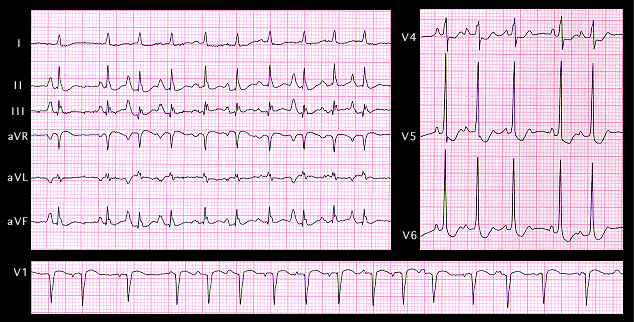
This ECG is an example of multifocal atrial tachycardia. It is from a 75 year old female with severe chronic lung disease. Note the multiple P wave morphologies and the difficulty in determining which is dominant. Note also the varying PP, PR and RR intervals. The tall R waves in leads V5 and V6 suggest left ventricular hypertrophy (LVH). The ST and T wave changes seen most prominently in leads V5 and V6 are probably due to LVH.
